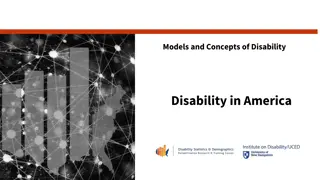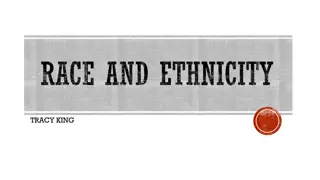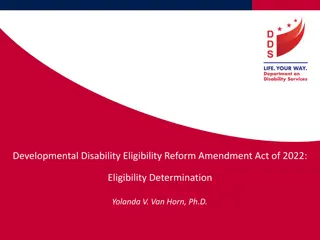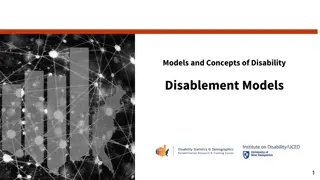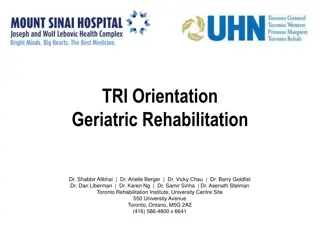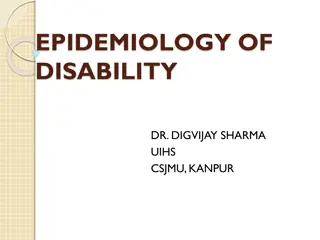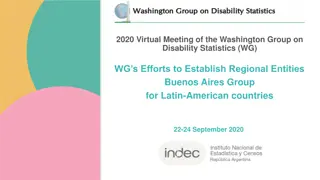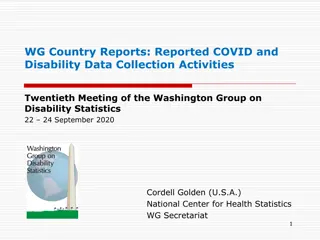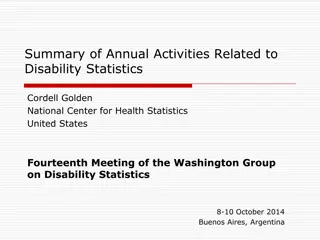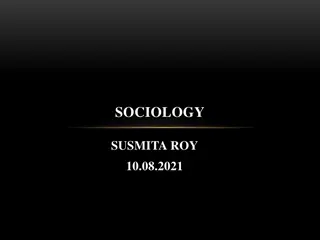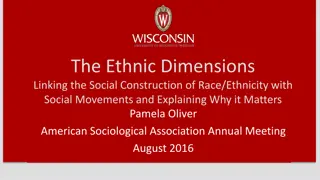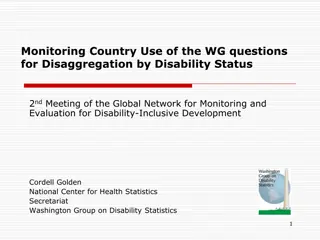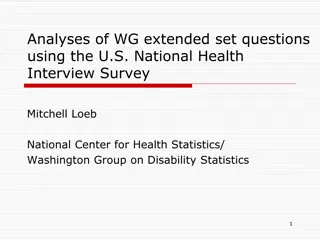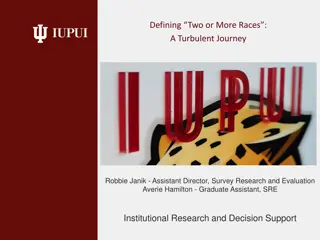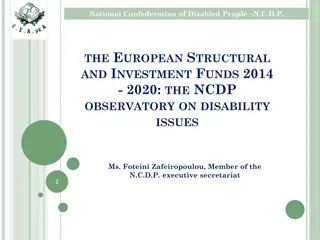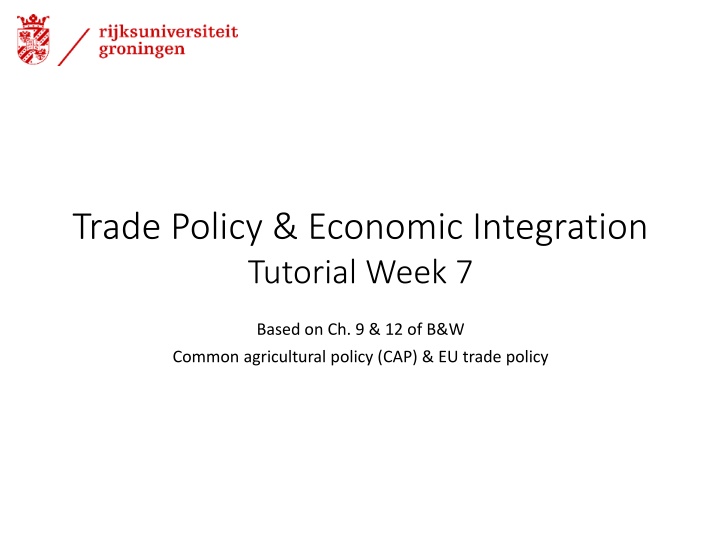
Race, Class, Disability: Implications for Families
Approximately 18.7% of the US population has a disability, with varying rates across different racial and ethnic groups. This presentation explores educational and diagnostic disparities, intersection of diagnosis and race, as well as early intervention disparities related to race, class, and disability. It aims to review existing literature, discuss gaps, and propose ways to enhance social work education and research in this intersection.
Uploaded on | 1 Views
Download Presentation

Please find below an Image/Link to download the presentation.
The content on the website is provided AS IS for your information and personal use only. It may not be sold, licensed, or shared on other websites without obtaining consent from the author. If you encounter any issues during the download, it is possible that the publisher has removed the file from their server.
You are allowed to download the files provided on this website for personal or commercial use, subject to the condition that they are used lawfully. All files are the property of their respective owners.
The content on the website is provided AS IS for your information and personal use only. It may not be sold, licensed, or shared on other websites without obtaining consent from the author.
E N D
Presentation Transcript
Trade Policy & Economic Integration Tutorial Week 7 Based on Ch. 9 & 12 of B&W Common agricultural policy (CAP) & EU trade policy
Exercise 7.1 Before the UK adopted the CAP, it supported its farmers with a system of deficiency payments , which are essentially production subsidies. Use a diagram like Figure 9.2 in the book to analyze this policy, assuming: Import of food was duty free, but the government directly paid farmers the difference between the market price and a target price for each unit of food they produced. Be sure to consider: The implications for world prices, UK production and UK imports, as well as The welfare implications for UK farmers, consumers and taxpayers.
Without any market intervention Price Domestic Supply Pw+S Pw Domestic Demand
With Deficiency Payment WHO cares about WHAT in this graph? Price Domestic Supply Pw+S Pw Domestic Demand
With Deficiency Payment what the farmers cares about Price Domestic Supply $$ the farmers receive Pw+S Pw What consumers care about $$ you pay Domestic Demand
Net social welfare effect Price Domestic Supply Consumer Surplus Does not change $$ the farmer receives Producer Surplus expands by Decrease in gov revenue Pw+S $S paid by gov Net social welfare decreases by: Pw Production increases, Imports decrease by a same amount $$ you pay Domestic Demand Quantity New production
Exercise 7.2 Suppose the EU allowed free trade in food and subsidized production on small farms only. Analyze the price, quantity and welfare implications of this policy using a diagram.
Supply curves without subsidy Price Small Farm Big Farm Aggregated Given a particular price level Sum of supply from both farms
Supply curves without subsidy Price Pw Small Farm Big Farm Aggregated
Supply curve with subsidy to small farm ?! Pw Size of subsidy Small Farm Big Farm Aggregated
Social welfare effect of subsidizing small farms Government Revenue: Decrease by Consumers: the same as free trade Producer Surplus: Small farm increases by Big farm: unchanged. ?! Pw Size of subsidy Production of small farms Increase of supply comes all from small farms Small Farm Big Farm Aggregated
Is this option attractive? Ideologically: YES. Targeted help on the one who indeed need help. Practically: Dangerous. Big farmers are not stupid Simply split the farm in book keeping
Exercise 7.3 The European Commission has proposed putting an upper limit on the total direct payment per farm of approximately 300,000. What would be the impact of this on prices, output and the distribution of farm incomes?
Cap on maximum subsidy Small farms unaffected. Big farms earns a lower price per unit of output, when the maximum of has been reached. (i.e. without subsidy) Big farms supply exactly the amount of output that make full use of the 300 thousand subsidy (and stop there). P + Subsidy max Subs. Price faced by large farms Small unaffected, Big is smaller in scale, So relatively: inequality between two farms is now smaller. P Z 300,000
Problem?? Don t forget that the big farmers are not stupid
Exercise 7.4 Answer What is the role of the Member States and the Commission when it comes to external trade policy? Exclusive competence . To keep EU policy coherent in the face of the complexity of EU trade policy, the treaties assign to the European Commission the task of negotiating trade matters with third nations on behalf of the member states. Article 207, lid 2 of the Treaty on the Functioning of the European Union. The European Parliament and the Council, acting by means of regulations in accordance with the ordinary legislative procedure, shall adopt the measures defining the framework for implementing the common commercial policy. In practice, this means that the EU Trade Commissioner is responsible for conducting trade negotiations.
Exercise 7.5 Answer Explain the term hub-and-spoke bilateralism as applied to the EU s neighbors in Europe and around the Mediterranean. Hub & Spoke Structure hub
Exercise 7.5 Answer Explain the term hub-and-spoke bilateralism as applied to the EU s neighbors in Europe and around the Mediterranean. Hub & Spoke Structure Hub: EU. Large single market. s s Spoke: Surrounding countries, A network of bilateral trade agreements with the EU, Hub p e But limited (functioning) deals between themselves Rational for the surrounding countries. Cost & benefit in negotiating international agreements. o k

